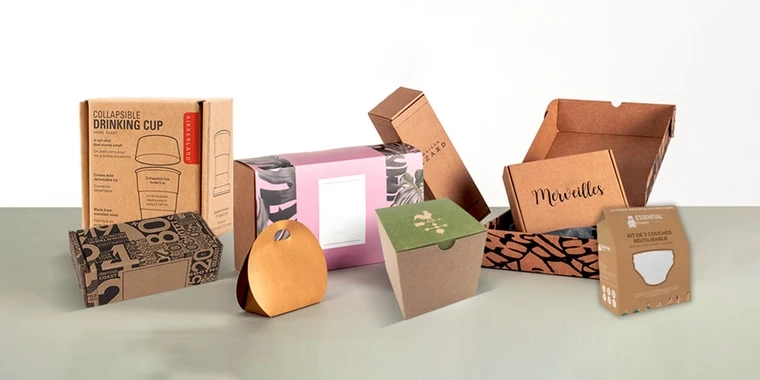Over the past few years, the packaging industry has witnessed a profound evolution due to consumers' escalating demand for sustainability. The era of single-use plastics and excessive packaging waste gradually led to a new paradigm focused on sustainable solutions. In today's market, eco-conscious consumers actively seek out brands that prioritize environmentally friendly practices, making sustainable packaging a critical determinant of business success. Traditional packaging materials are replaced by eco-friendly alternatives like recycled paper, cardboard, plant-based plastics, and compostable materials. These innovative materials help reduce the overall carbon footprint and foster a circular economy by promoting recycling and composting processes that close the loop and minimize waste. As sustainability continues to gain momentum, embracing these eco-friendly packaging options becomes imperative for businesses looking to align with consumer preferences and contribute to a greener future.
What Does Eco-Friendly Packaging Entail?
Eco-friendly packaging minimizes the environmental impact of packaging through materials and practices aimed at waste reduction, energy conservation, and the use of renewable resources. It entails utilizing recycled or biodegradable materials like recycled paper, cardboard, and bioplastics derived from sources such as cornstarch or sugarcane. The objective is to establish a cradle-to-cradle system that reduces waste and pollution and preserves natural resources. By adopting eco-friendly packaging practices, companies showcase their commitment to sustainability, reduce their environmental impact, and attract eco-conscious consumers seeking environmentally responsible products that minimize waste and pollution and conserve natural resources. Embracing eco-friendly packaging enables businesses to align with sustainable values, lower their carbon footprint, and cater to the increasing demand for greener products.
Using Eco-Friendly Packaging to Help the Environment
Lowering Carbon Footprint: Manufacturing eco-friendly packaging reduces carbon footprint and promotes sustainability. Sustainable practices create materials, conserve energy, minimize waste, benefiting the environment.Readily Recycled or Reused: Many companies opt for eco-friendly, easily recyclable, or reusable packaging. It can go in curbside recycling bins, serve other purposes, or facilitate future shipments, reducing waste and promoting sustainability practices.Eco-friendly packaging is sustainable, unlike non-eco options. It avoids specialized disposal or landfilling, making it a more environmentally responsible choice.Free of Harmful Toxins: Eco-friendly food packaging safeguards food quality, emphasizing its significance. Choosing sustainable packaging ensures food protection, highlighting the importance of eco-friendly practices.
Sustainable Packaging is a Solution and an Investment Opportunity
The limited effectiveness of plastic recycling and the challenges of multiple recycling cycles make it an inadequate long-term solution for a circular economy. Reducing consumption and packaging to a degree that would significantly impact plastic waste would severely affect the global economy. However, a focus on sustainable packaging offers a more viable approach to effectively decrease the volume of plastic waste. This entails reevaluating packaging practices throughout the entire supply chain, from design and transportation to consumption, aiming to minimize waste and maximize efficiency while mitigating negative consequences. Implementing this ambitious vision presents numerous hurdles. Yet, the potential benefits would be immense if investors and industries collaborate to find solutions.
Streamline Your Design with Eco-Friendly Packaging
Efforts to minimize packaging waste and optimize sizes and shapes offer substantial potential for reducing transportation-related emissions. Business leaders can play a pivotal role by reassessing packaging materials and identifying opportunities to utilize lighter-weight options or explore alternatives with a lower environmental footprint. This strategic approach can lead to significant reductions in carbon emissions. Moreover, designing packaging solutions that maximize space utilization during transportation can decrease the need for multiple shipments, reducing emissions. Embracing these sustainable packaging practices aligns with environmental stewardship and resource efficiency goals. However, implementing such changes may require research, development, and infrastructure investments. By prioritizing these initiatives and fostering stakeholder collaboration, businesses can contribute to a greener future and reap long-term benefits for the planet and their operations.
Eco-Friendly Packaging at PrintnBox
Having gained insight into eco-friendly packaging, you're poised to discover its application in your business. Adopting eco-friendly packaging not only enhances brand image but also reduces transportation expenses. We're here to assist you if you're eager to embrace eco-friendly packaging. Feel free to contact us when you're prepared to embark on this journey.



